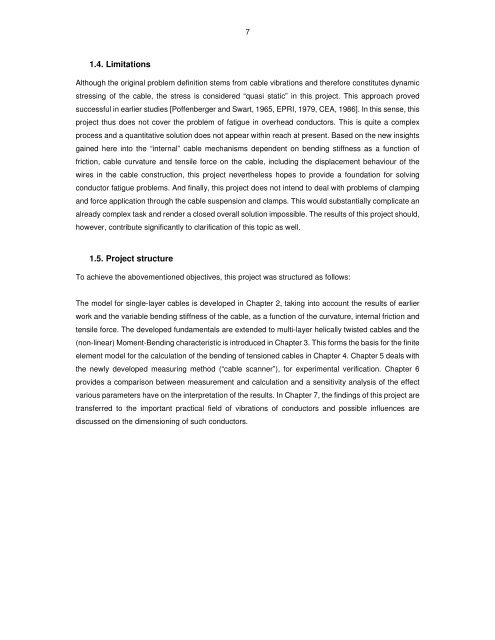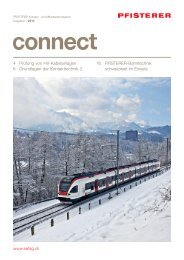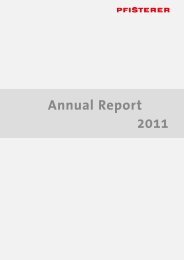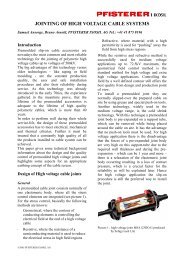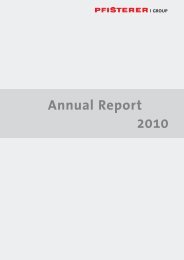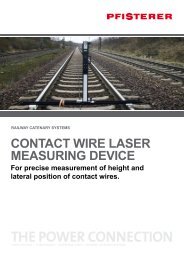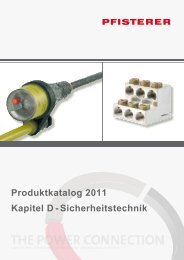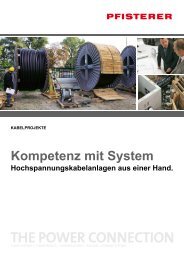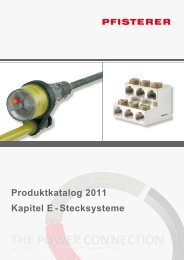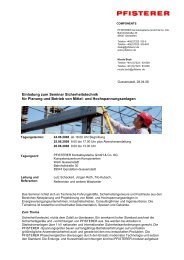Bending of helically twisted cables under variable ... - Pfisterer
Bending of helically twisted cables under variable ... - Pfisterer
Bending of helically twisted cables under variable ... - Pfisterer
Create successful ePaper yourself
Turn your PDF publications into a flip-book with our unique Google optimized e-Paper software.
1.4. Limitations<br />
7<br />
Although the original problem definition stems from cable vibrations and therefore constitutes dynamic<br />
stressing <strong>of</strong> the cable, the stress is considered “quasi static” in this project. This approach proved<br />
successful in earlier studies [P<strong>of</strong>fenberger and Swart, 1965, EPRI, 1979, CEA, 1986]. In this sense, this<br />
project thus does not cover the problem <strong>of</strong> fatigue in overhead conductors. This is quite a complex<br />
process and a quantitative solution does not appear within reach at present. Based on the new insights<br />
gained here into the “internal” cable mechanisms dependent on bending stiffness as a function <strong>of</strong><br />
friction, cable curvature and tensile force on the cable, including the displacement behaviour <strong>of</strong> the<br />
wires in the cable construction, this project nevertheless hopes to provide a foundation for solving<br />
conductor fatigue problems. And finally, this project does not intend to deal with problems <strong>of</strong> clamping<br />
and force application through the cable suspension and clamps. This would substantially complicate an<br />
already complex task and render a closed overall solution impossible. The results <strong>of</strong> this project should,<br />
however, contribute significantly to clarification <strong>of</strong> this topic as well.<br />
1.5. Project structure<br />
To achieve the abovementioned objectives, this project was structured as follows:<br />
The model for single-layer <strong>cables</strong> is developed in Chapter 2, taking into account the results <strong>of</strong> earlier<br />
work and the <strong>variable</strong> bending stiffness <strong>of</strong> the cable, as a function <strong>of</strong> the curvature, internal friction and<br />
tensile force. The developed fundamentals are extended to multi-layer <strong>helically</strong> <strong>twisted</strong> <strong>cables</strong> and the<br />
(non-linear) Moment-<strong>Bending</strong> characteristic is introduced in Chapter 3. This forms the basis for the finite<br />
element model for the calculation <strong>of</strong> the bending <strong>of</strong> tensioned <strong>cables</strong> in Chapter 4. Chapter 5 deals with<br />
the newly developed measuring method (“cable scanner”), for experimental verification. Chapter 6<br />
provides a comparison between measurement and calculation and a sensitivity analysis <strong>of</strong> the effect<br />
various parameters have on the interpretation <strong>of</strong> the results. In Chapter 7, the findings <strong>of</strong> this project are<br />
transferred to the important practical field <strong>of</strong> vibrations <strong>of</strong> conductors and possible influences are<br />
discussed on the dimensioning <strong>of</strong> such conductors.


